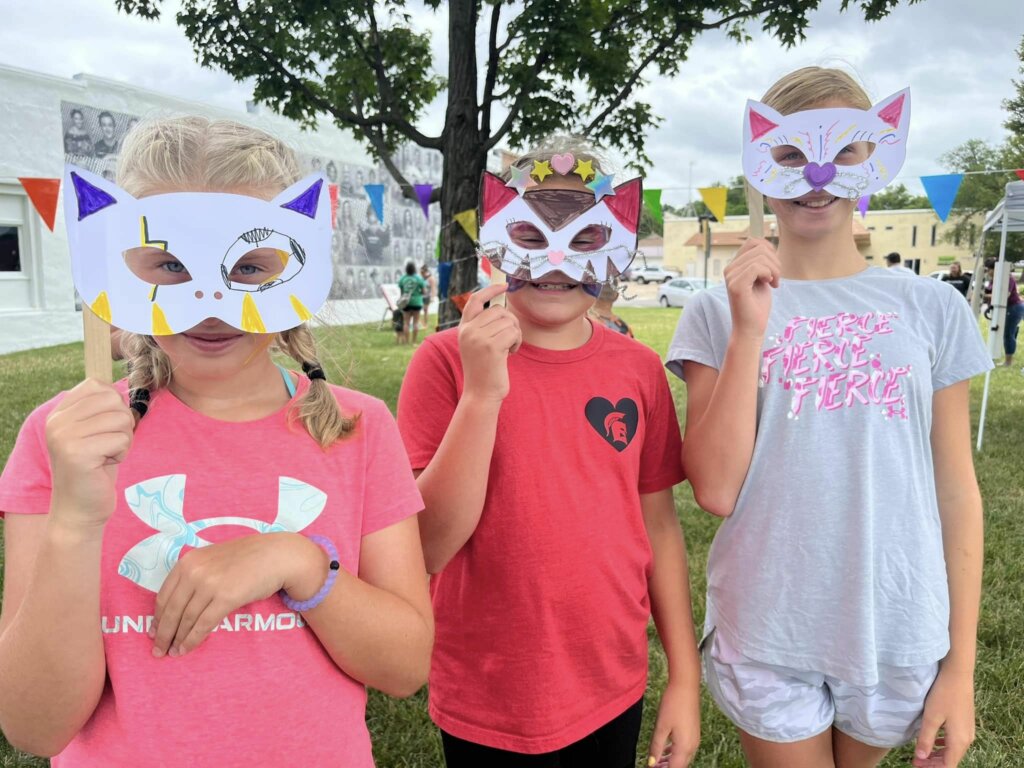The Charge: Community Connectivity.
Main Street programs impact several elements of the community. We train and finance entrepreneurs, help develop the physical spaces of communities, develop and execute promotional activities, enhance volunteer efforts to improve the region, and raise resources to invest in catalyst projects. All of these different elements help build a sense of community, but why is that important?
Let’s think about how the economic environment has influenced change over the past few decades. In many communities, “lifestyle” businesses (traditional store fronts) saw a shift towards more corporate environments. Relationship building was replaced with the desire for faster customer turnover. A salesperson helping you all the way to the counter was replaced with limited customer contact and self checkout. Stopping in to a favorite location as a “third space” (a place you felt comfortable in outside of home or work) was replaced by the drive through. Work environments that once let staff off for volunteer opportunities during the day often went away. Job opportunities that require constant movement from city to city mean families are often too spread out to allow for casual in-person interactions.
From a technology perspective, the last couple of decades have allowed us to reach out to each other in ways that we never thought possible. Teenagers have replaced “cruising” to find friends with connecting on social media. The face-to-face discourse at the local coffee shop too often now takes place in more rancorous online chat rooms. Remote work, online portals for almost anything, and endless media streamed to your device of choice means less need for human interaction. Technology that enabled isolation during the global pandemic of 2020 accelerated, and some forms of isolation persist today.
The lack of socialization has led to the US Surgeon General to cite an epidemic of “loneliness”. A statistic cited at the National Main Street conference indicated that an all-time low number of Americans (16%) feel a strong positive connection with their community. Mental health issues continue to rise, and the costs incurred by our society, health care systems, and our economy increase each year. We continually treat the symptoms of social isolation, but treating the underlying causes takes a community approach. So, what can we do?

First, we need to continue to focus on ways to bring the community together in consistent gathering spaces, and not necessarily always for pressurized sales activities. This is where downtowns are critically important to community health. Large scale events, unique businesses, entertainment, and “third spaces” allow individuals social opportunities. We’ve all been invited to “social” gatherings that are interrupted by a speech that turns into some sort of sales pitch, and that’s not what we are talking about. We are talking about providing opportunities for people to come out, congregate with others, meet new people, and have some social time in areas that consistently provide activity without necessarily requiring an artificial activation.
Second, we need to highlight resources to encourage additional socialization and the opportunity to meet new people. The Mix and Mingle event is one example, but there are some simple social events we plan on rolling out over the next several months to simply encourage social connections. We need to intentionally design more opportunities for people to meet in ways that don’t always feel formal or forced. Emporia Main Street’s association with the Main Street America has introduced some relatively simple options we can execute (with some Fab Lab assistance) to encourage relationship building.
Third, we need entrepreneur businesses to engage customers and staff on a deeper level. It’s not like small businesses need one more thing to do, but relationship building can be a major competitive advantage for small businesses. When you know about your customers you can encourage socialization through events, refer other local businesses that function as “third spaces”, and can engage the public in ways that make them feel good about making community connections. There are some techniques you can employ if interested (contact Emporia Main Street for simple suggestions based on your business type).

Finally, whether we want to admit it or not (we are talking to introverts, me included) we can do a better job putting ourselves out there to make connections. You don’t have to like everyone, and if people are making a connection to leverage the relationship feel free to bail, but there are enough people in the region that you can help create social opportunities if you make an effort. Introduce yourself. Say hello. Invite people out to activities. Become a connector. I know introverts that think they are doing okay, but the national data would indicate that satisfying our desire for “a lack of peopleing” (a completely made up word that every introvert knows) has negative consequences for us and our community.
We can’t just treat the symptoms without treating the cause. Emporia Main Street is an economic AND community development agency. We can do a better job on the community side of the equation, and we hope you can help us build a healthier community through socialization.
You must be logged in to post a comment.